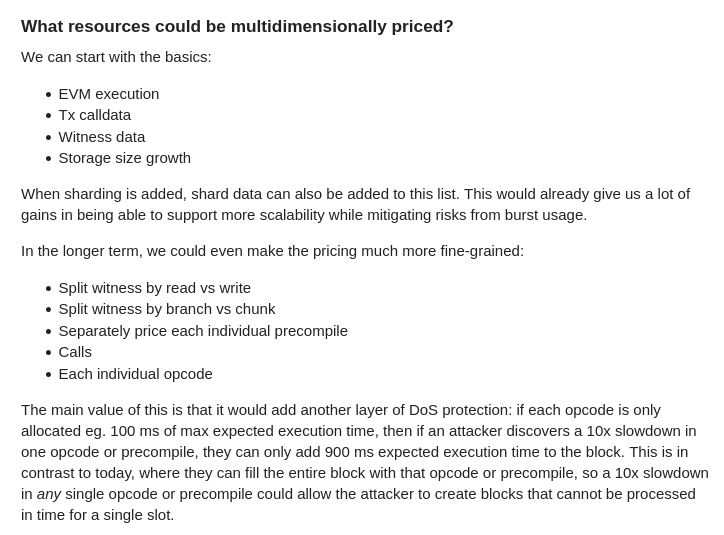
You've heard of EIP-1559, but what if it was applied to more than just gas? Enter Multidimensional EIP-1559, a proposal from @VitalikButerin.
Let's break it down in a 🧵 👇
Let's break it down in a 🧵 👇
EIP-1559 smooths out gas costs, reducing gas spikes due to dynamic blocksize and pricing. This reduces usage bursts in the network, which makes it easier to use at any given time instead of pricing out users at random intervals. 

This has been a success in reducing waiting periods for users among other improvements, as shown in this research paper:
arxiv.org/abs/2201.05574
arxiv.org/abs/2201.05574

Multidimensional EIP-1559 brings dynamic fees beyond gas, and can smooth out usage spikes even further, increasing usability of the network at any given time. 

With this being said, it's still very early research, and would take a lot more discussion and engineering to implement, but it is an interesting discussion. Read the full research + discussion here:
ethresear.ch/t/multidimensi…
ethresear.ch/t/multidimensi…
• • •
Missing some Tweet in this thread? You can try to
force a refresh



